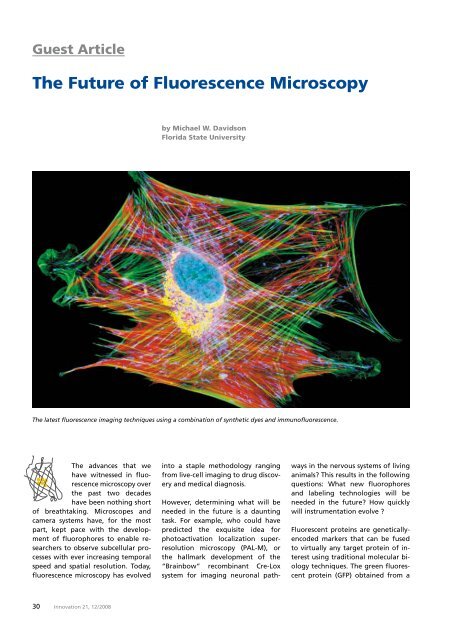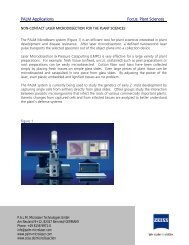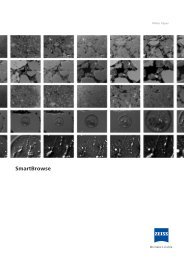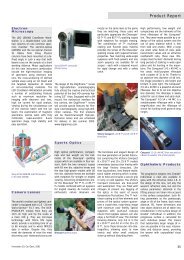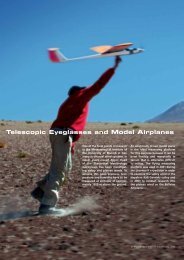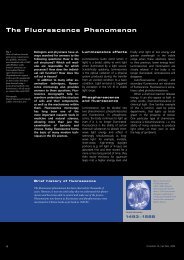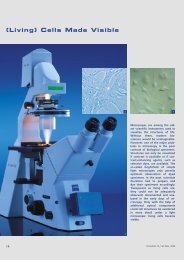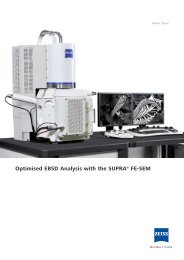Living Images: Fluorescence microscopy Camera Lens ... - Carl Zeiss
Living Images: Fluorescence microscopy Camera Lens ... - Carl Zeiss
Living Images: Fluorescence microscopy Camera Lens ... - Carl Zeiss
You also want an ePaper? Increase the reach of your titles
YUMPU automatically turns print PDFs into web optimized ePapers that Google loves.
Guest Article<br />
The Future of <strong>Fluorescence</strong> Microscopy<br />
However, determining what will be<br />
needed in the future is a daunting<br />
task. For example, who could have<br />
predicted the exquisite idea for<br />
photoactivation localization superresolution<br />
<strong>microscopy</strong> (PAL-M), or<br />
the hallmark development of the<br />
“Brainbow” recombinant Cre-Lox<br />
system for imaging neuronal pathby<br />
Michael W. Davidson<br />
Florida State University<br />
The latest fluorescence imaging techniques using a combination of synthetic dyes and immunofluorescence.<br />
The advances that we<br />
have witnessed in fluorescence<br />
<strong>microscopy</strong> over<br />
the past two decades<br />
have been nothing short<br />
of breathtaking. Microscopes and<br />
camera systems have, for the most<br />
part, kept pace with the development<br />
of fluorophores to enable researchers<br />
to observe subcellular processes<br />
with ever increasing temporal<br />
speed and spatial resolution. Today,<br />
fluorescence <strong>microscopy</strong> has evolved<br />
into a staple methodology ranging<br />
from live-cell imaging to drug discovery<br />
and medical diagnosis.<br />
ways in the nervous systems of living<br />
animals? This results in the following<br />
questions: What new fluorophores<br />
and labeling technologies will be<br />
needed in the future? How quickly<br />
will instrumentation evolve ?<br />
Fluorescent proteins are geneticallyencoded<br />
markers that can be fused<br />
to virtually any target protein of interest<br />
using traditional molecular biology<br />
techniques. The green fluorescent<br />
protein (GFP) obtained from a<br />
30 Innovation 21, 12 / 2008


